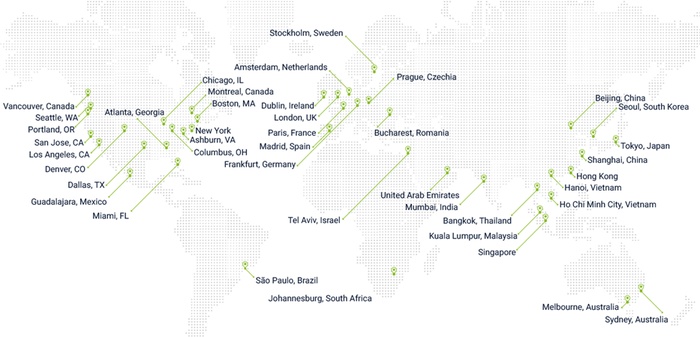SD-WAN Provider Cato Networks Gets $55 Million, Defying 'Rigid' CarriersSD-WAN Provider Cato Networks Gets $55 Million, Defying 'Rigid' Carriers
Get to know the "un-carrier" of SD-WAN.

Cato Networks is scaling up and positioning its partners to move up-market.
The SD-WAN provider announced a $55 million investment round led by Lightspeed Venture Partners. Cato’s total venture capital funding has reached $125 million.
Cato co-founder and CEO Shlomo Kramer told Channel Partners that the latest funds will help his company invest in engineering and support to expand its service infrastructure, while also pouring new money into sales and marketing.
Cato’s Shlomo Kramer
“Cato is building a new type of carrier, one that evolves at cloud speed and provides a managed network experience addressing global, SD-WAN, security, cloud and mobility needs,” Kramer said. “It is a multibillion-dollar opportunity that is aligned with the general trend to move away from do-it-yourself products to cloud services as a way to optimize spend and accelerate business growth.”
Cato has positioned itself as the “un-carrier” of SD-WAN. As its vice president of marketing told Light Reading, Cato doesn’t offer its platform as the foundation for service providers’ offerings but delivers its solution using a global private network, built-in security and the channel.
And as investment grows, The Tel Aviv, Israel-based vendor reports a sizable yield. Bookings grew 352 percent in 2018, while Cato’s channel partners increased their business by a factor of five.
Yoni Cheifetz, a partner at Lightspeed, said Cato’s cloud-native vision is more equipped to capitalize on market opportunity than legacy players and their “rigid networks.”
“Cato is a transformative force in the stagnant managed network services market,” Cheifetz said. “Businesses are looking for an affordable, agile and scalable network to drive strategic initiatives like global expansion, hybrid cloud and workforce mobility.”
The young company says its integrated platform of security and networking offers a significant cost advantage to small businesses, but the company is moving up-market at a fast clip. Cato landed its first 1,000-site organization and is attracting other large enterprises.
Centrient Pharmaceuticals, which employees approximately 2,000 people, used Cato’s platform to replace its MPLS network. Centrient Global IT manager Matthieu Cijsouw echoed other businesses that say they chose Cato because of its value proposition.
“MPLS was about four times more than Cato for a quarter of the bandwidth,” Cijsouw said. “With Cato Cloud, not only did I receive a more agile infrastructure, but I also received an agile partner who can keep up with my needs. We operate faster because of Cato.”
Kramer said his company’s channel partners will benefit from the latest scaling initiative.
“Cato will accelerate the move to serve ever larger enterprise customers and enable our partners to compete effectively against legacy service providers with a complete, highly differentiated networking and security solution,” he said.
Cato exited stealth mode in 2016 with multiple rounds of financing in hand. Its U.S. channel leader declared that the company would sell 100-percent indirect, and the company has backed up those sentiments with numerous master agent partnerships in the last two years. Cato has more than 300 customers.
The company has unveiled multiple enhancements to its platform in the last year, including …
… intelligent last-mile managing, identity-aware routing and real-time network analytics.
Cato also bolstered its global private network, going from 25 points of presence (PoPs) in August 2017 to 42 today. Chief rival Aryaka Networks most recently numbered its PoPs at 30.

Courtesy of Cato Networks
Cato and other pure-play SD-WAN vendors seek to displace the legacy carriers, which already have a foothold in the networking market. A Cato study conducted a year ago found that nearly half (49 percent) of respondents say a service provider or carrier provided their SD-WAN. That number indicated a 19-point increase from 30 percent in the 2017 study.

Cato’s Dave Greenfield
But Dave Greenfield, Cato secure networking evangelist, told us last year that customers want independence, control and cost-effectiveness that the large telcos aren’t providing.
“We’ve got a number of customers who left carriers and came to us because of all the problems they’ve had,” Greenfield said. “Carriers view SD-WAN as just a way of continuing their MPLS services, of maintaining their hold on customers.”
You can find a full list of Cato’s 2018 enhancements in Tuesday’s announcement.
Read more about:
AgentsAbout the Author
You May Also Like


